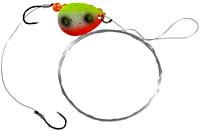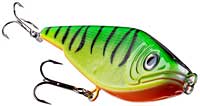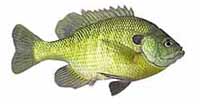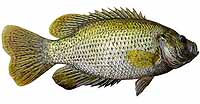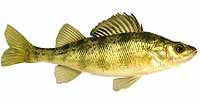Fishing Report For Black Lake, MI
By Rick Seaman
Last updated on .

Fishing Reports
Popular Fish Species Black Lake, MI
Northern Pike
Current Report: Fair To Good
FALL. As the weather starts turning cold, water temperatures cool fastest in the shallows. This brings baitfish into shallower waters, and northerns follow along with this food source. They hang around weedbed edges, main-lake points, reefs, and rocky shorelines to ambush prey in 6 to 20 feet of water. Effective lures include spoons, spinners, and spinnerbaits, particularly those with bright colors or metallic finishes to attract the pike's attention. This is a prime feeding time as they prepare for winter. It is also a good time to catch a trophy pike. Fishing for northern pike fishing can be decent during Fall, sometimes as late as October.
WINTER. Pike remain active in Winter, often congregating in or near remaining weedbeds, especially along the edges. Other structure options include long points, reefs, ledge drop-offs, and rocky humps, ideally nearby deeper water. Ice fishing was good here in winter. At times, when oxygen is depleted in deeper water, northerns suspend directly under the ice, where maximum oxygen is available. Other times they hold on structure in 4 to 15 feet of water, sometimes deeper. Trolling along weed edges also draws them out to attack. In winter, there are numerous reports of nice pike being caught ice fishing.
SPRING. Local anglers report catching the most northern pike during the peak season of April and May. After ice out, northern pike migrate to shallow, warmer pockets, bays and coves. The marshes at the south end of the lake are particularly popular areas. Once water temperatures reach around 40 degrees, they move into even shallower areas with vegetation, to spawn. Ideal depths range from 2 to 10 feet. After spawning they linger in the shallow bays for a short period. Once water temperatures rise into the 50's, they move to deeper weedbeds and shallow structures adjacent to even deeper water. Bright colors, whites and flashy lures appeal to these predators. Noisy topwater lures can also produce some spectacular strikes. Alternate between baits until you identify which one triggers the most bites for the day.
SUMMER. Northern pike scatter all around the lake, rather than gather in groups. Deep weedlines and channel edges around North Bay and the Rainy River Arm are often good in summer. During the day they are holding from 8 to 25 feet deep, on ledges, reefs, weedbeds, rock piles, islands and channel edges. Some of the larger specimens are suspending in open water, just outside feeding areas. Trolling or drift fishing produces some nice catches, using spoons, big spinners, cut bait, and deep diving crankbaits. Early and late in the day, they move shallow to feed and can be caught around most weedy shorelines, in 5 to 12 feet of water. Noisy topwater lures, spinnerbaits and Johnson spoons with curly-tail grubs, are catching nice pike shallow.
Walleye
Current Report: Good To Very Good
Black Lake is only 50 feet deep at the deepest areas, walleye tend to choose shallower flats, next to drop-offs into this deep water.
FALL. Fall brings cooler temperatures to shallow water, drawing walleye and baitfish shallower. Locals report catching nice walleye on long points, flats along the river and creek channels, and structure off shore. Jigs, swimbaits, spoons, crankbaits, jerkbaits, and spinnerbaits are all historically good for catching walleye this time of year. Early Fall finds them in 8 to 18 feet of water. Later in Fall, they move out slightly deeper. Dragging jigs, bottom bouncers, or worm harnesses with nightcrawlers or leeches, around ledge drop-offs is catching walleye fairly consistently. Watch for the bigger walleye to be slightly deeper than the majority of the school.
WINTER. This Winter. fishing for walleye was pretty good through the ice. When the lake freezes over, ice fishing for walleye is often productive. Before, during and after the ice, anglers report catching them in 15 to 30 feet of water, along creek channel edges, rocky humps and ledges. Use GPS to locate spots you normally fish during other times of the year. They primarily feed on small fish, staying close to the bottom. After ice-out blade baits, jigs, swimbaits, spoons, deep-diving crankbaits, and worm harness spinners, all work while deep trolling or drifting.
SPRING. Early Spring brings warming water in the shallows, and draws walleye here to feed, especially rocky areas and inlet channels. The Black River Inlet and the Rainy River Arm are ideal choices. In Spring work deep points, drop offs, submerged structure, rock ledges, deeper flats and edges adjacent to deeper water. Here, in 3 to 12 feet deep, they will spawn once the water warms to the mid to high 40's. When they move shallow, bright colored jigs, tipped with minnows or nightcrawlers typically catch them. Spinnerbaits, jerkbaits and crankbaits are also working when walleye are up shallow. Afterwards, they move to 10 to 20 feet deep around points, flats, shoals and ledges, nearby shore, often staying in close proximity to their spawning locations.
SUMMER. Water temperatures rise in Summer, and walleye fishing is good if you can get your bait deep enough. Early in Summer, walleye tend to concentrate in 8 to 20 feet of water. Throughout Summer, early in the morning, and from dusk to long after dark are good times to catch walleye. At those times they move slightly shallower to feed in low-light conditions. Night fishing is often good in Summer, as well. On bright, sunny days walleye move deeper off these ledges. Generally walleye like to hang around structure on points, flats and ledges. Look for flats and points, like the North Bay, that drop from 15 or 20 feet on top, to around 35 feet deep as these are always a great attraction for walleye. The west side of the lake offers several of these structures. The rest of the time they are cruising flats and creek channel edges, 15 to 30 feet deep , preferring the cooler temperatures. When the bite is slow, grubs and nightcrawlers, fished just off the bottom typically catch walleye.
Muskie
Current Report: Good To Very Good
Muskellunge are being caught in Black Lake with a wide variety of lures and baits. Locals report that the chance of catching a monster muskie is available on any given cast or troll. Use a strong rod in medium- to medium-heavy action, with heavy line - 20# or heavier.
FALL. Considered by many avid muskie anglers to be the best time to fish for muskie, Fall finds these big predators back in the shallows feeding heavily in preparation for winter. 6 to 20 feet of water is where most muskie are being caught, with warm afternoons being the best time to focus on 10 feet deep structure. Noisy, flashy, and bright color lures are ideal during this time as they are quite aggressive. Locals prefer the Black River mouth area in Fall.
WINTER. As Winter chills the water, muskie move deeper and hold on structure in 15 to 25 feet of water. When the lake freezes over in winter, ice fishing for musky can be very exhilarating. Points, deep weedbeds, drop-offs, channel edges and corners around the mouths of rivers are good places to find them this time of year. Ice fishing can be productive when the ice is safe, but muskie are being caught all through cold-winter season. Cold water causes muskie to be less active in winter, due to slowed metabolism. Slow moving, or nearly motionless presentations are in order. Jigging spoons, ciscoes, shiners and suckers are favorites of muskie enthusiasts.
SPRING. Muskie move from their deep wintering habitat into shallow bays and flats for Spring spawning. They prowl 3 to 12 feet deep, once water temperatures get into the 50's. Noisy, flashy, and bright color lures are ideal during this time as they are very aggressive. After the spawn is over and water temperatures rise, concentrate on weed lines, and drop-offs along the edges of weedy flats 5 to 20 feet deep. Big spinners, bass assassins, and Johnson spoons will all attract hungry muskie.
SUMMER. The best time of year to chase these big fish is Spring, and then again in Fall as the water temperature starts cooling. Early and late in the day, muskie cruise shallower cover in search of food in 6 to 15 feet of water. During mid day they prefer the cooler water 15 to 25 feet deep. Ledges, reefs, weedbeds, islands and channel edges are the primary areas to find muskie during the warmer months of Summer. Weed edges along the north and west shores, as well as the North Bay and the Rainy River Arm are good choices. Some of the larger muskie may also suspend in open water, just outside these areas. Trolling or drift fishing reportedly produces some nice catches, using spoons, live bait, big spinners and deep diving crankbaits.
Fishing Video
Fish species to fish for...
Guide to fishing for largemouth bass, smallmouth bass, channel catfish, black crappie, walleye, bluegill, rock bass, yellow perch, longnose gar, muskie and northern pike at Black Lake in Michigan.
 Black Lake is a 10,000-acre lake at the northern tip of the lower peninsula, with 19 miles of shoreline and exceptionally clear water. Musky, northern pike, walleye, bass and perch are the favorite fish species here, In winter, ice fishing for walleye and perch is quite popular and catches of other species is common.
Black Lake is a 10,000-acre lake at the northern tip of the lower peninsula, with 19 miles of shoreline and exceptionally clear water. Musky, northern pike, walleye, bass and perch are the favorite fish species here, In winter, ice fishing for walleye and perch is quite popular and catches of other species is common.
Primary fish species to catch
Click images for fishing tips and details about each species.
Today's Weather & Forecast
Public Boat Launch Ramps & Landings
Click here for boat ramps.
Fishing License
Click here for a Michigan Fishing License.
Map - Fishing & Access
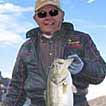 Rick Seaman is a fishing enthusiast with over five decades of fishing experience, a retired tournament fisherman, author of numerous published articles on fishing, and co-author of the book "Bass Fishing - It's not WHAT you throw, It's WHERE you throw it".
Rick Seaman is a fishing enthusiast with over five decades of fishing experience, a retired tournament fisherman, author of numerous published articles on fishing, and co-author of the book "Bass Fishing - It's not WHAT you throw, It's WHERE you throw it".
 Contact Information
Contact Information
Black Lake State Forest Campground
2674 Eisens Trail,
Cheboygan, MI 49721
231 627-2811
Fishing lakes in each state
102425
Black Lake, MI Report
MICHIGAN


Fishing for pike, walleye, bass, musky and perch in the northern tip of the lower peninsula, MI.












